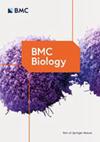利用机器学习辅助微生物组分析防止非法海产品贸易
IF 4.4
1区 生物学
Q1 BIOLOGY
引用次数: 0
摘要
海产品在全球范围内的贸易量越来越大,但其供应链特别容易出现欺诈行为。为了增强消费者信心,防止非法贸易,并为生态标签提供独立验证,需要精确的海产品溯源工具。在这里,我们展示了微生物组图谱(MP)与机器学习(ML)的结合使用,可以精确追踪在地理距离较小的地区收获的马尼拉蛤蜊的来源。这项研究旨在反映真实世界的情况。在欧洲最重要的蛤蜊产地(亚得里亚海沿岸北部的泻湖)的不同季节采集蛤蜊,以涵盖该物种微生物组组成的已知季节性变化。从样本中提取的 DNA 经历了与商业产品相同的净化过程(即在开放式流动系统中至少 12 小时)。使用两组完全独立的数据(在相同地点但不同年份采集)对微生物组图谱进行了基于机器学习的分析,一组用于训练算法,另一组用于测试算法的准确性并评估时间稳定性信号。简言之,在一个禁渔区和四个养殖点,于两个不同年份(即从 2018 年到 2020 年)的夏季和冬季采集了蛤蜊的鳃(GI)和消化腺(DG)。对蛤蜊组织进行了 16S DNA 代谢编码,并将获得的扩增子序列变异(ASVs)表作为 ML MP 的输入。使用 GI 和 DG 的综合信息(共识分析)获得了最佳预测性能,当目标是对从禁渔区和养殖场采集的样本进行分类时,Cohen K 分数大于 0.95。四个不同养殖区的分类准确率略低,仅为 0.76 分。我们在此表明,MP 和 ML 是追踪贝类产品来源的有效工具。该工具对季节性、年际变化以及产品变质具有极高的稳定性,可用于常规评估,以防止非法捕捞或贴错标签的贝类产品的交易。本文章由计算机程序翻译,如有差异,请以英文原文为准。
Preventing illegal seafood trade using machine-learning assisted microbiome analysis
Seafood is increasingly traded worldwide, but its supply chain is particularly prone to frauds. To increase consumer confidence, prevent illegal trade, and provide independent validation for eco-labelling, accurate tools for seafood traceability are needed. Here we show that the use of microbiome profiling (MP) coupled with machine learning (ML) allows precise tracing the origin of Manila clams harvested in areas separated by small geographic distances. The study was designed to represent a real-world scenario. Clams were collected in different seasons across the most important production area in Europe (lagoons along the northern Adriatic coast) to cover the known seasonal variation in microbiome composition for the species. DNA extracted from samples underwent the same depuration process as commercial products (i.e. at least 12 h in open flow systems). Machine learning-based analysis of microbiome profiles was carried out using two completely independent sets of data (collected at the same locations but in different years), one for training the algorithm, and the other for testing its accuracy and assessing the temporal stability signal. Briefly, gills (GI) and digestive gland (DG) of clams were collected in summer and winter over two different years (i.e. from 2018 to 2020) in one banned area and four farming sites. 16S DNA metabarcoding was performed on clam tissues and the obtained amplicon sequence variants (ASVs) table was used as input for ML MP. The best-predicting performances were obtained using the combined information of GI and DG (consensus analysis), showing a Cohen K-score > 0.95 when the target was the classification of samples collected from the banned area and those harvested at farming sites. Classification of the four different farming areas showed slightly lower accuracy with a 0.76 score. We show here that MP coupled with ML is an effective tool to trace the origin of shellfish products. The tool is extremely robust against seasonal and inter-annual variability, as well as product depuration, and is ready for implementation in routine assessment to prevent the trade of illegally harvested or mislabeled shellfish.
求助全文
通过发布文献求助,成功后即可免费获取论文全文。
去求助
来源期刊

BMC Biology
生物-生物学
CiteScore
7.80
自引率
1.90%
发文量
260
审稿时长
3 months
期刊介绍:
BMC Biology is a broad scope journal covering all areas of biology. Our content includes research articles, new methods and tools. BMC Biology also publishes reviews, Q&A, and commentaries.
 求助内容:
求助内容: 应助结果提醒方式:
应助结果提醒方式:


